Gongura (Roselle), scientifically known as Hibiscus sabdariffa, is a leafy plant renowned for its tangy, crimson leaves. As a native to India, it’s a staple in Andhra Pradesh cuisine and a widely growing Gongura in India. The leaves are rich in essential nutrients like vitamins, minerals, and antioxidants. Gongura is primarily used in culinary applications, especially in preparing pickles, chutneys, and traditional curries, lending a unique tart flavor.
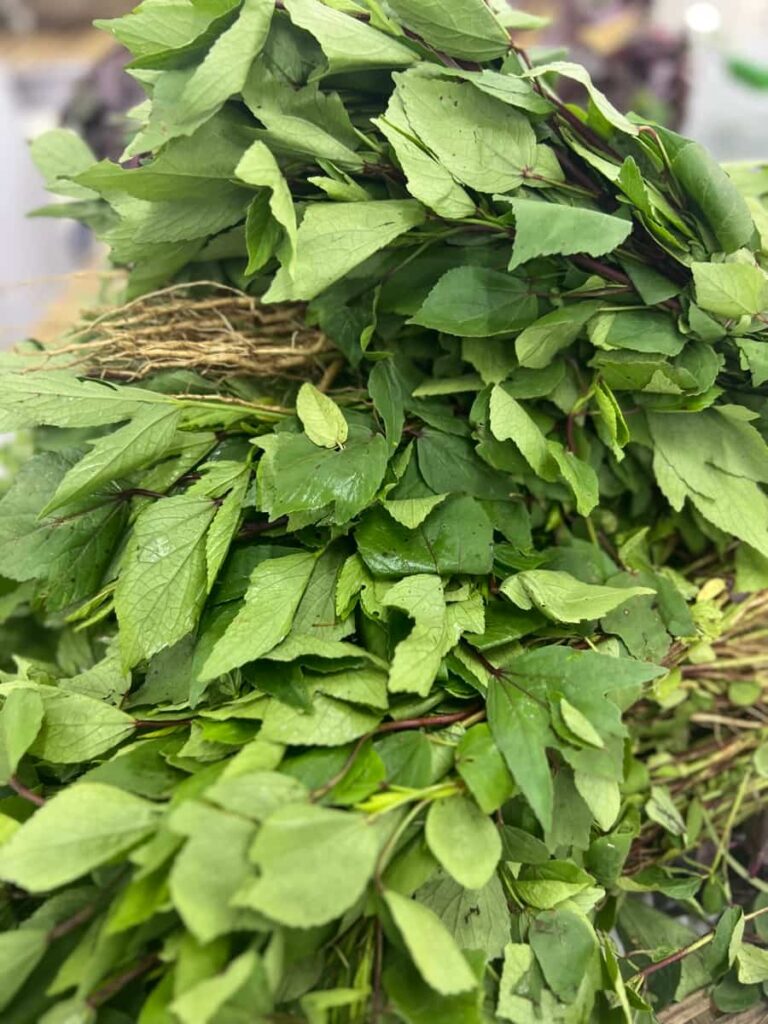
It also has potential health benefits, including aiding digestion and providing vitamin C. With its distinct taste and nutritional value, Gongura plays a vital role in Indian culinary traditions and offers a delightful twist to various dishes. This guide, “How to grow Gongura from seeds and stems in a home garden, offers planting tips for successfully growing Gongura from seeds and stems in different home garden settings, allowing you to savor its distinctive taste right at your doorstep.
How to Grow Gongura from Seeds and Stems in Home Garden
Gongura Varieties, Types, and Characteristics
Gongura (Roselle) boasts several distinct varieties. The two main types are the red-stemmed and green-stemmed varieties. Red-stemmed Gongura, known for its vibrant crimson leaves, is commonly used in culinary applications. It has a robust, tangy flavor profile. Green-stemmed Gongura, while less prevalent, is valued for its milder taste.
It features green stems and leaves. Both varieties share similar nutritional profiles, rich in vitamins, minerals, and antioxidants. Additionally, they are renowned for their potential health benefits, like aiding digestion and boosting immunity. These versatile varieties provide a unique culinary experience with their characteristics.
Red stemmed Gongura Varieties: Hibiscus sabdariffa var. sabdariffa, Florida Cranberry, African Red, Sudanese Roselle, Indian Red, Bangladeshi Red, Thai Red and Chinese Red.
Best Season to Grow Gongura
To grow Gongura from seeds and stems in a home garden, first know the season that it grows well. The best season to grow Gongura, known as Roselle, largely depends on the climate and location. Generally, Gongura thrives in warm to hot climates. It can be grown year-round in tropical and subtropical regions, with the rainy season especially favorable for its growth.
However, for regions with distinct seasons, the ideal time to plant Gongura is from late spring to early summer, when the temperatures are consistently above 21°C. Gongura is sensitive to frost and cold temperatures, so it’s crucial to avoid planting during winter months. Starting seeds indoors and transplanting when the weather warms up is a common practice in colder regions.
Selecting the Right Location for Growing Gongura: Terrace, Backyard, or Pots?
The location for growing Gongura from seeds and stems in a home garden depends on space, climate, and convenience. If space is limited, pots or containers are a great option, offering flexibility and ease of care. Backyards with well-drained soil and adequate sunlight are ideal for larger-scale cultivation.
Terraces can work with plenty of sunlight and proper drainage systems. Regardless of the location, Gongura thrives in warm to hot climates and requires well-drained soil. Ensure the chosen site receives at least 6-8 hours of sunlight daily. Ultimately, the decision should align with your available space and the conditions needed for successful Gongura growth.
Preparing the Soil for Growing Gongura (Roselle) on the Ground
- Soil Requirement For Gongura: Gongura thrives in well-drained soil. Sandy loam or loamy soil with good aeration is ideal. Ensure it has a slightly acidic to neutral pH level (pH 5.5 to 6.8).
- Soil Testing: Do a soil test to determine its pH level and nutrient content. Amend the soil as needed to reach the desired pH range.
- Clear Debris: Remove any weeds, rocks, or debris from the planting area. Clean, weed-free soil is essential.
- Compost: Incorporate organic compost for Gongura or well-rotted manure into the soil. This improves soil structure, provides essential nutrients, and enhances moisture retention.
- Sunlight: Choose a sunny location with at least 6-8 hours of direct sunlight.
- Drainage: Ensure proper drainage to prevent waterlogging, which can harm Gongura. Raised beds can be an option if drainage is a concern.
In case you missed it: 20 Steps to Grow Mandarin Oranges in Season from Seeds, Fruit, indoors, and Pots
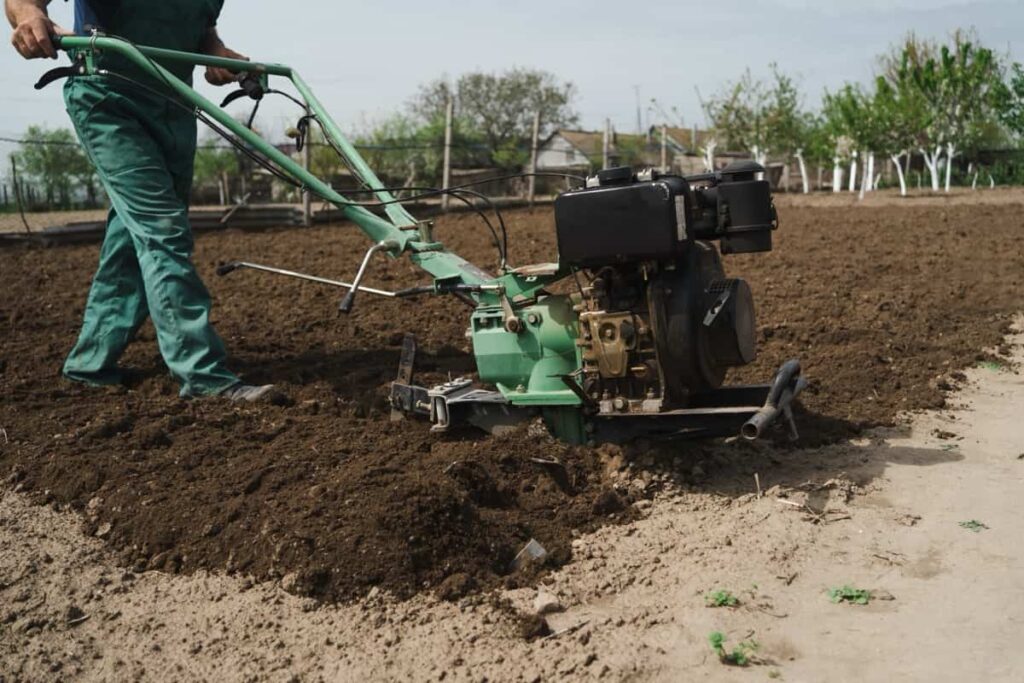
Preparing The Soil For Growing Gongura In Pots
- Choose the Right Pot: Select pots at least 12 inches deep with drainage holes to prevent waterlogging.
- Potting Mix: Use a well-draining mix with a slightly acidic to neutral pH (around 5.5 to 6.8). You can mix potting soil with compost for added nutrition.
- Fertilizer: Incorporate a balanced, slow-release fertilizer into the potting mix before planting.
- Sunlight: Place the pots in a sunny spot that receives daily 6-8 hours of direct sunlight.
- Watering: Maintain consistent moisture levels when the top inch of soil feels dry.
Sowing Gongura Seeds: Step-by-Step Instructions for Terrace, Backyard, and Pots
Sowing Gongura Seeds in the Ground
- Gongura Sowing Distance: Purchase Gongura seeds online, make small furrows or holes about 1/4 inch deep, and place the seeds 2-3 inches apart. Cover them with soil and gently pat them down.
- Watering: Consistently keep the soil moist but not waterlogged. Use a gentle spray to prevent disturbing the seeds.
- Germination: Gongura seeds usually germinate within 7-14 days. Once they reach 2-3 inches in height, thin them to maintain proper spacing.
Sowing Gongura (Roselle) Seeds in Pots: Growing Gongura in Containers
- Sow Seeds: Plant Gongura seeds 1/4 inch deep, 2-3 inches apart in the pots.
- Watering: Keep the soil evenly moist. Use a gentle watering can to avoid disturbing the seeds.
- Germination: Place the pots in a sunny location and maintain the ideal temperature. Germination should occur within 7-14 days.
Gongura Seed Germination Process
Gongura seeds typically germinate within 7-14 days. During this period, ensure a consistently warm environment and adequate moisture. Once the seedlings emerge, provide them with plenty of sunlight and continue to water them regularly. As they grow, thin them out to achieve proper spacing, typically maintaining 6-12 inches between plants. Proper care during germination and early growth stages is crucial for a successful Gongura harvest.
Planting Gongura Stems: Step-by-Step Instructions Terrace, Backyard and Pots
Propagating Gongura (Roselle) from Stems: Techniques and Best Practices
To propagate Gongura from stems, select healthy stems with at least two sets of leaves. Cut a 6-8 inch stem below a node and remove lower leaves. Plant the stem in well-draining soil or potting mix, ensuring it’s moist but not waterlogged. Keep stems hydrated during planting. New growth will emerge from nodes, and with proper care, you’ll have a flourishing Gongura plant.
Planting Gongura Stems in the Ground
- Prep Soil: Ensure well-drained soil with a pH of 5.5-6.8. Dig a small trench or hole.
- Gongura Planting Distance: Place stems 2-3 inches deep, leaving the top leaves above the soil. Space them 6-12 inches apart.
- Watering: Water thoroughly after planting and maintain even moisture.
- Sunlight: Place in a sunny location, receiving 6-8 hours of sunlight.
In case you missed it: How to Grow Potatoes in Raised Bed Trenches: A Step-by-Step Guide
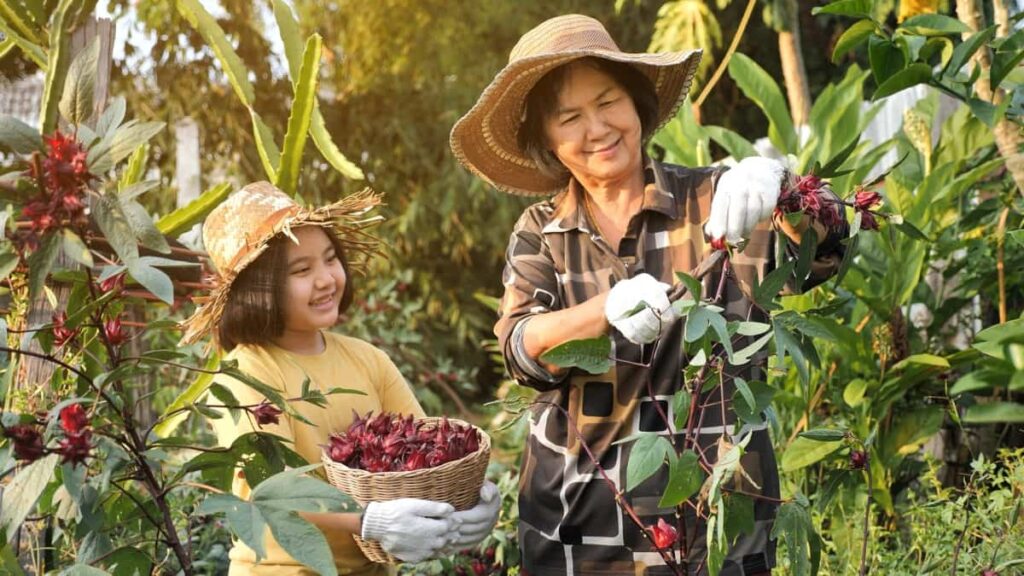
Planting Gongura Stems in Pots: How To Grow Gongura In Pots
- Pot Size For Gongura: Opt for pots with at least 12 inches deep drainage holes.
- Fill with Potting Mix: Use a well-draining potting mix.
- Insert Stems: Plant stems 2-3 inches deep, keeping the top leaves above the soil.
- Watering: Water thoroughly and maintain consistent moisture.
- Sunlight: Place pots in a sunny spot, ensuring daily 6-8 hours of sunlight.
Watering Gongura(Roselle) Plants: When to Water?
Watering Gongura plants is crucial to their health. Water when the top soil is dry to the touch. Gongura thrives in well-drained soil, so avoid waterlogging. In hot climates, it may need more frequent watering, possibly every 2-3 days. During cooler or rainy periods, reduce the frequency to prevent overwatering.
Water the base of the plant at ground level, avoiding the leaves to prevent fungal diseases. Early morning is an ideal time for watering, allowing the plant to dry before evening. Consistency is key – maintain a regular watering schedule to ensure your Gongura plants stay healthy and productive.
Providing Adequate Sunlight to Gongura: Sun Exposure Requirements
Growing Gongura from seeds and stems in a home garden requires ample sunlight for healthy growth and maximum productivity. Ideally, they need 6-8 hours of direct sunlight daily. Plant them in a location where they can receive this sunlight consistently. In regions with harsh sun, some partial afternoon shade can be beneficial to prevent scorching.
Adequate sunlight is essential for photosynthesis, providing energy for plant growth and developing the distinctive tangy flavor in Gongura leaves. If you’re growing Gongura indoors or in pots, place them near a sunny window, or else use grow lights to ensure they receive the necessary light for vibrant and robust growth.
Fertilizing Gongura (Roselle) Plants: Nutrient Needs and Organic Options
Gongura plants benefit from a balanced fertilizer regimen. To grow Gongura from seeds and stems in a home garden, a slow-release, balanced fertilizer with equal nitrogen, phosphorus, and potassium (NPK) is suitable. Apply it during the growing season, typically every 4-6 weeks. Enriching the soil with well-rotted compost or organic matter improves nutrient content.
Organic options like compost tea, fish emulsion, or seaweed extract provide essential nutrients while maintaining soil health. These organic choices enhance Gongura’s flavor and nutritional value. Avoid excessive fertilization, as it may lead to excessive foliage growth at the expense of flavorful leaves. Regular monitoring and a balanced nutrient supply will ensure thriving Gongura plants.
Gongura Plant Care: Natural Remedies and Prevention for Pests, Diseases, and Weeds
- Pests: Encourage beneficial insects such as ladybugs and lacewings to control aphids and caterpillars. Neem oil or garlic and chili pepper spray can deter pests.
- Diseases: Promote good air circulation and avoid overhead watering to prevent fungal diseases. Copper-based fungicides can treat early signs of fungal issues.
- Weeds: Mulch with organic materials like straw or leaves to suppress weeds. Hand-pull weeds as they appear.
- Regular inspection, proper spacing, and removal of infected leaves can help maintain healthy Gongura.
Pruning Gongura Plants: Maintaining Shape and Encouraging Productivity
Pruning Gongura plants is essential for maintaining shape and productivity. To grow Gongura from seeds and stems in a home garden in a healthy way, regularly trim back overgrown or leggy stems to encourage bushier growth and a more compact shape. Remove any yellowing or damaged leaves to improve overall plant health.
In case you missed it: Vegetable Planting Chart for London: Month-Wise Growing Calendar for Different Seasons
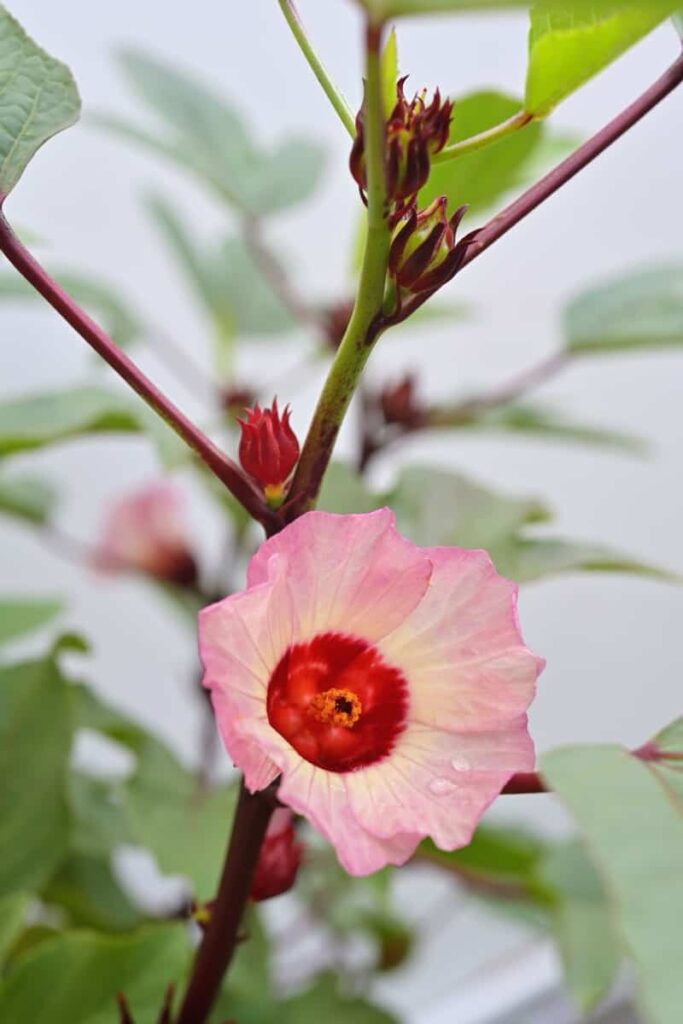
Pruning also diverts energy to new growth, resulting in more flavorful leaves. Harvest by cutting leaves at the base rather than plucking them individually. This practice stimulates regrowth and prolongs the harvest season. Periodic pruning and harvesting keep your Gongura plants well-maintained, ensuring a continuous supply of fresh and tangy leaves for your culinary delights.
Gongura Harvest Time: Timing and Techniques for Optimum Flavor
Harvesting Gongura leaves at the right time and using proper techniques is crucial for optimal flavor. Wait until the plant is at least 8-10 inches tall before harvesting. Choose young, tender leaves that are more flavorful and less fibrous. Use clean, sharp scissors to cut the leaves close to the stem, leaving a few inches of growth to encourage regrowth.
Don’t harvest more than one-third of the plant at a time to ensure it continues to thrive. Frequent harvesting, typically every 2-3 weeks, promotes new leaf growth and extends the harvest season. Freshly harvested Gongura leaves are at their tangiest and most delicious, perfect for pickles, chutneys, and curries.
Growing Gongura for Seeds: How Long Does it Take to Harvest Gongura Seeds?
How do you get Gongura seeds from plants? Harvesting Gongura seeds requires patience, as it typically takes several months. After the plant reaches maturity and produces flowers, it takes about 2 months to develop into seed pods. What time does it take to harvest Gongura seeds? The pods should be allowed to mature fully, typically turning brown and dry, before harvesting.
This can take an additional 2 months, bringing the total time to harvest Gongura seeds to about 2-3 months after planting. Proper care and patience during this period are essential to ensure viable Gongura plant seeds for future cultivation. Once harvested, Gongura seeds can be stored for future planting.
Growing Gongura Organically: Step-by-Step Instructions
- Select a Suitable Location: Choose a sunny spot with well-drained soil for planting Gongura.
- Prepare the Soil: Amend the soil pH with organic matter like vermicompost or well-rotted manure. This enriches the soil with nutrients and improves its structure.
- Planting: Plant Gongura seeds or stems following the guidelines mentioned earlier.
- Watering: Keep the soil consistently moist, avoiding waterlogging. Water at the base to prevent leaf diseases.
- Mulching: Apply organic mulch, like straw or leaves, to hold soil moisture and suppress weeds.
- Fertilizing: Use organic fertilizers like compost or tea to provide essential nutrients.
- Pest and Disease Control: Encourage natural predators, like ladybugs, for pest control. Neem oil or garlic and chili pepper spray can deter common pests.
- Weed Management: Hand-pull weeds as they appear or use organic mulch to suppress them.
- Pruning and Harvesting: Regularly prune and harvest Gongura leaves to maintain plant health and encourage regrowth.
- Crop Rotation: Practice crop rotation to avoid soil depletion and minimize disease recurrence.
In case you missed it: How to Grow Walnut Tree at Home: Propagation, Planting, Pollination, and Care
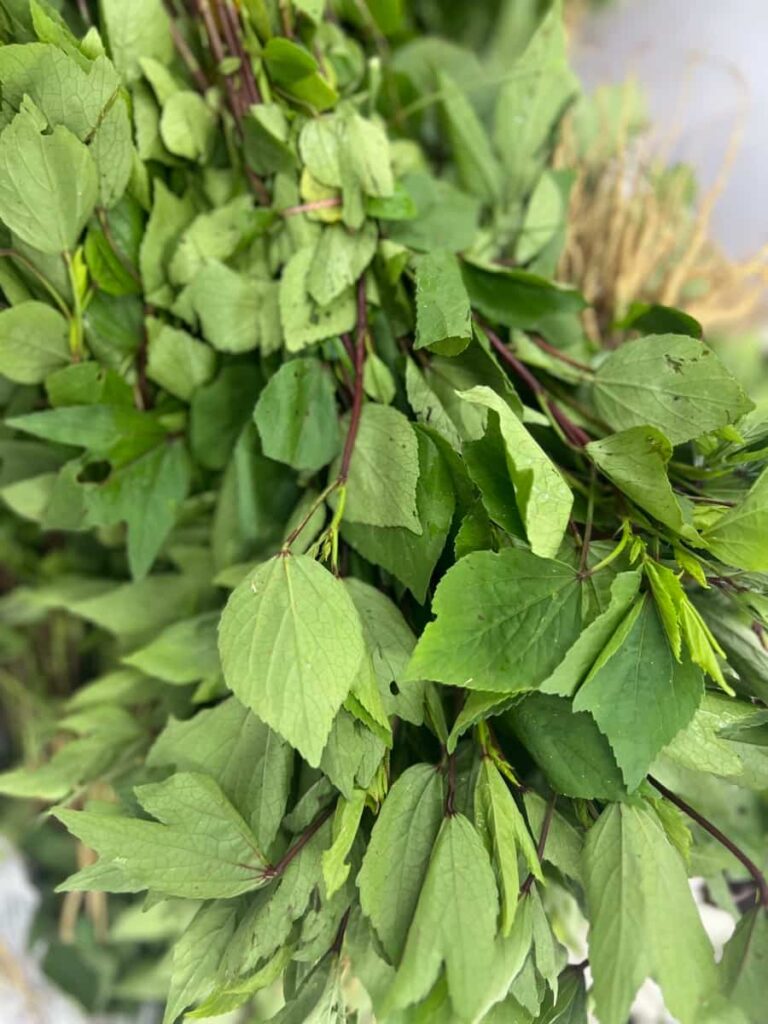
A Brief Summary of Growing Gongura from Seeds and Stems in a Home Garden
| Aspect | Details |
| Soil pH | 5.5 to 6.8 (slightly acidic to neutral) |
| Growing Season | Year-round in warm climates, summer to fall in temperate regions. |
| Sunlight Requirements | Full sun – partial shade, at least 6-8 hours of sunlight daily. |
| Plant-to-Plant Distance | 6-12 inches (15- 30 cm) |
| Row-to-Row Distance | 18-24 inches (45-60 cm) |
| Watering Frequency | Consistently maintain the soil moist but not waterlogged. Water as needed, typically 1-2 inches per week. |
| Fertilization Requirement | Fertilize with a balanced, all-purpose fertilizer when planting and then 4-6 weeks during the growing season. |
| Time Required to Ready for Harvest | Approximately 6-8 weeks from planting seeds, or sooner if growing from stems. Harvest leaves when they are large and mature. |
In case you missed it: How to Grow Pistachios at Home: Propagation, Planting, Pollination, Care, and Yield
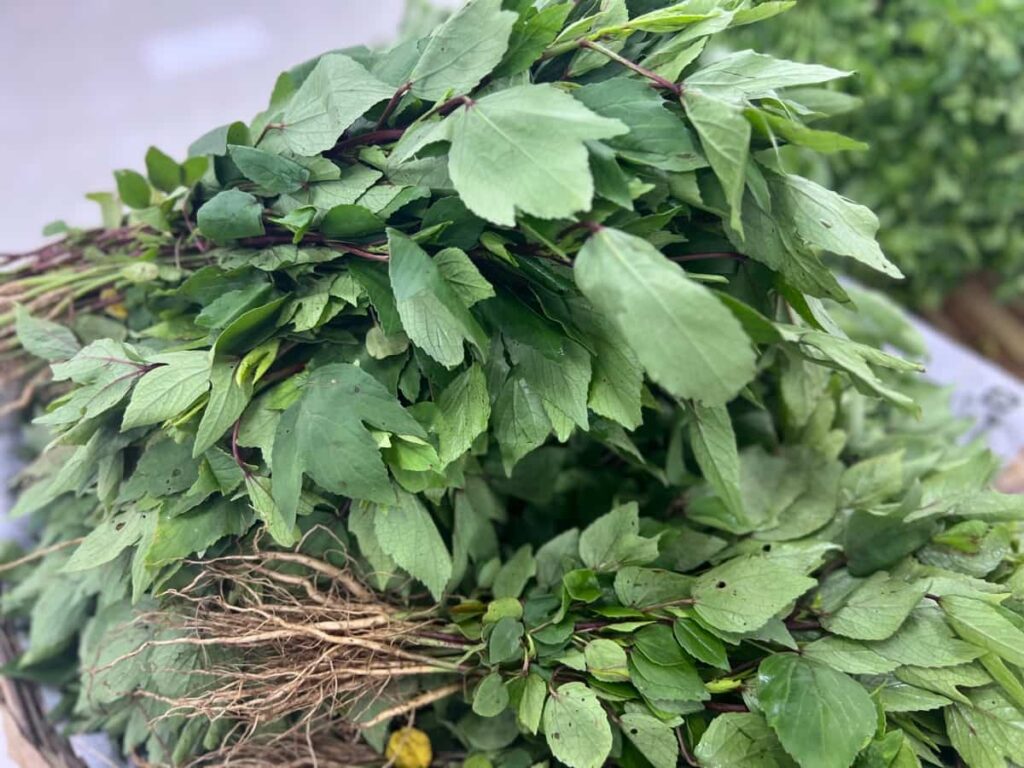
Gongura is Called in Different Languages
| Language | Name for Gongura |
| Telugu | Gongura |
| Hindi | Ambadi |
| Marathi | Pitwaa / Ambaadi |
| English | Roselle |
| Kannada | Ambadi Soppu |
| Tamil | Pulichakeerai / Pundi |
| Malayalam | Pulichakeerai / Pundi |
| Bengali | Tenga Shak |
| Oriya | Khatti Bhaji |
| Gujarati | Khata Dhana / Ambadi |
| Punjabi | Ambadi |
| Urdu | Ambadi |
| Sinhala (Sri Lanka) | Pulichakeerai |
Conclusion
Gongura is a hardy plant and can adapt to various garden settings. By following these planting tips, you can enjoy a bountiful harvest of this flavorful and nutritious green in your home garden.
- Profitable Village Farming Business Ideas in 2024
- High-Yield Aquaculture: Fast-Growing Fish for Farming
- Effective Fish Pond Construction Techniques for Beginners
- Irrigation and Water Management in Pineapple Farming
- Blossom to Harvest: Mastering Flowering and Pollination in Papaya Farming
- Pig Fattening Essentials: From Selection to Sale for Beginners
- Raising Wagyu Cattle: A Complete Guide for Premium Beef Production
- Soil Types and Their Water Holding Capacity
- Optimizing Irrigation Schedules for Coconut Groves for Enhanced Yield
- Espresso Your Garden: Coffee Grounds for Healthier Acid-Loving Plants
- The Best Soil Mix for Snake Plants: How to Mix Your Own Snake Plant Soil
- Green Thumb Success: Expert Tips for Cultivating Greenhouse Beans All Year Round
- Bloom All Year Round: The Ultimate Guide to Indoor Hyacinth Care
- Eco-Friendly Gardening: How to Make Liquid Fertilizer from Kitchen Waste
- Ultimate Guide to Grow Anise in Pots: Explore Seed Propagation to Harvesting
- Guide to Raising Chester White Pigs: Discover Breed Facts to Growth Management
- Mastering the Elegance: The Ultimate Guide to Weeping Cherry Tree Care, Planting, and Maintenance
- Ultimate Guide to Planting Garlic in Grow Bags: Growing Strategies for Beginners
- How to Fix Spider Plant Leaf-Related Problems: Natural and Organic Remedies
- 10 Reasons Why Your Tulsi Plant is Shedding Leaves: Home Remedies and Solutions
- Optimizing Growth and Yield: The Advantages of Palm Bunch Ash Fertilizer
- Utilizing Neem Oil Extract as a Natural Pesticide for Hydrangea
- From Soil to Harvest: Various Ways in Which Farmers Can Use AI Tools
- Steps to Encourage and Induce Citrus Flowers: A Comprehensive Guide
- How to Fix Snake Plant Leaf-Related Issues: Natural and Organic Remedies
- Transform Your Garden into a Fragrant Oasis with Raat Ki Rani (Night Blooming Jasmine)
- Discover the Ideal Chicken Breeds for Philippine Farms
- How to Create a Poultry Egg Farm Business Plan for Profits
- Grow Lemon Cucumbers Like a Pro: Insider Techniques for Bountiful Yields
- Ultimate Guide to Caring for Your Pink Princess Philodendron: Tips for Thriving Variegation
- Areca Nut Profit Per Acre: Calculating Yield and Cost of Cultivation
- How Kaveri Chicken is Becoming a More Profitable Breed in Indian Backyards
- Transform Your Barn: 9 Steps to Convert a Horse Stall into a Chicken Coop
- Exploring Suffolk Sheep Disadvantages with Limitations and Challenges
- Guide to Solving Potted Lemon Tree Problems: How to Revive Lemon Tree in Containers
- Steps to Encourage Female Pumpkin Flowers: Best Strategies for More Flowers and High Yields
